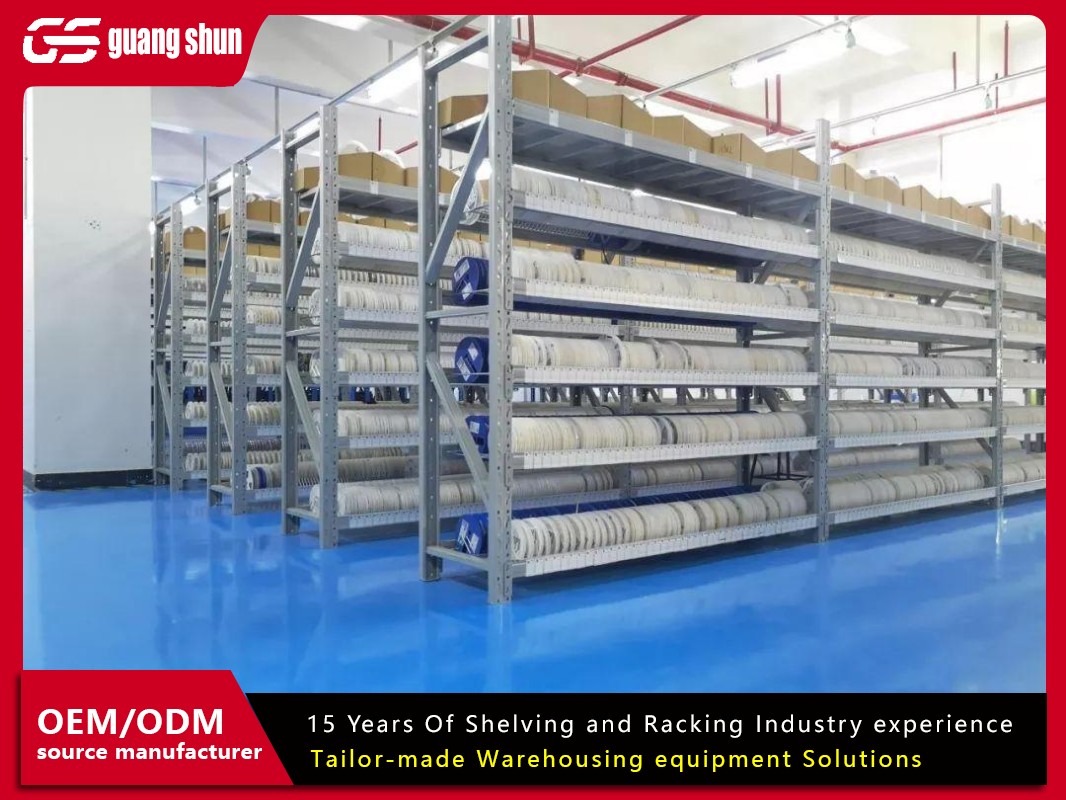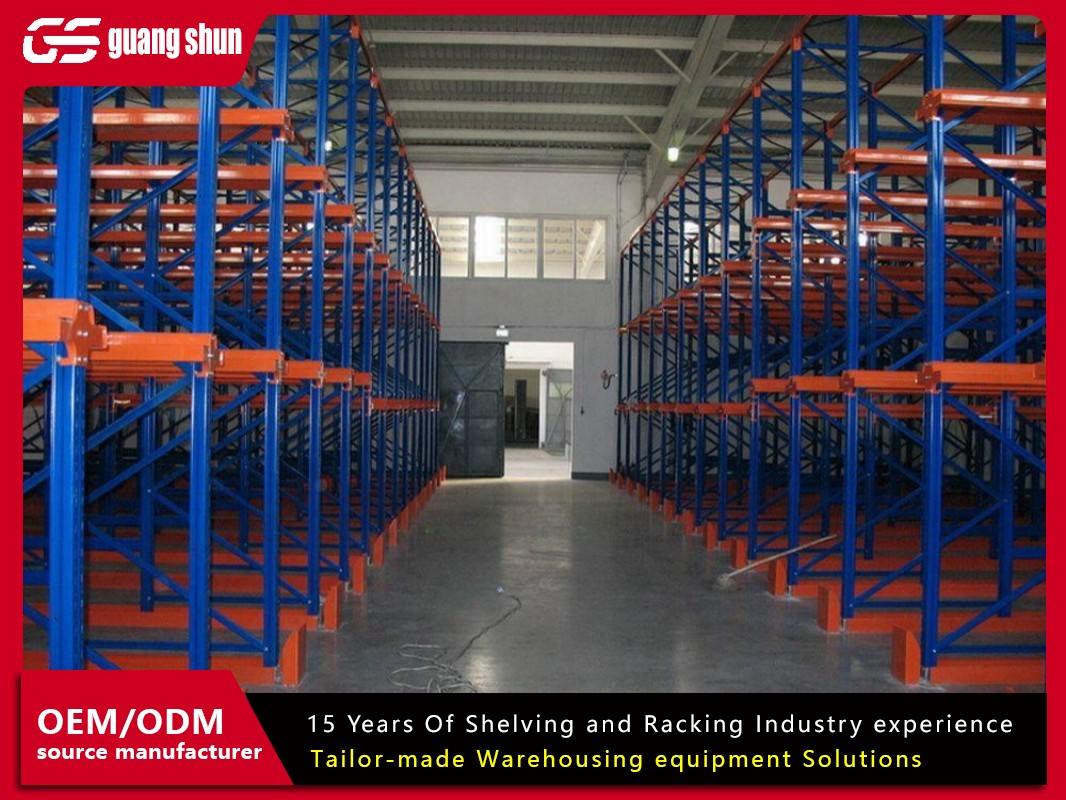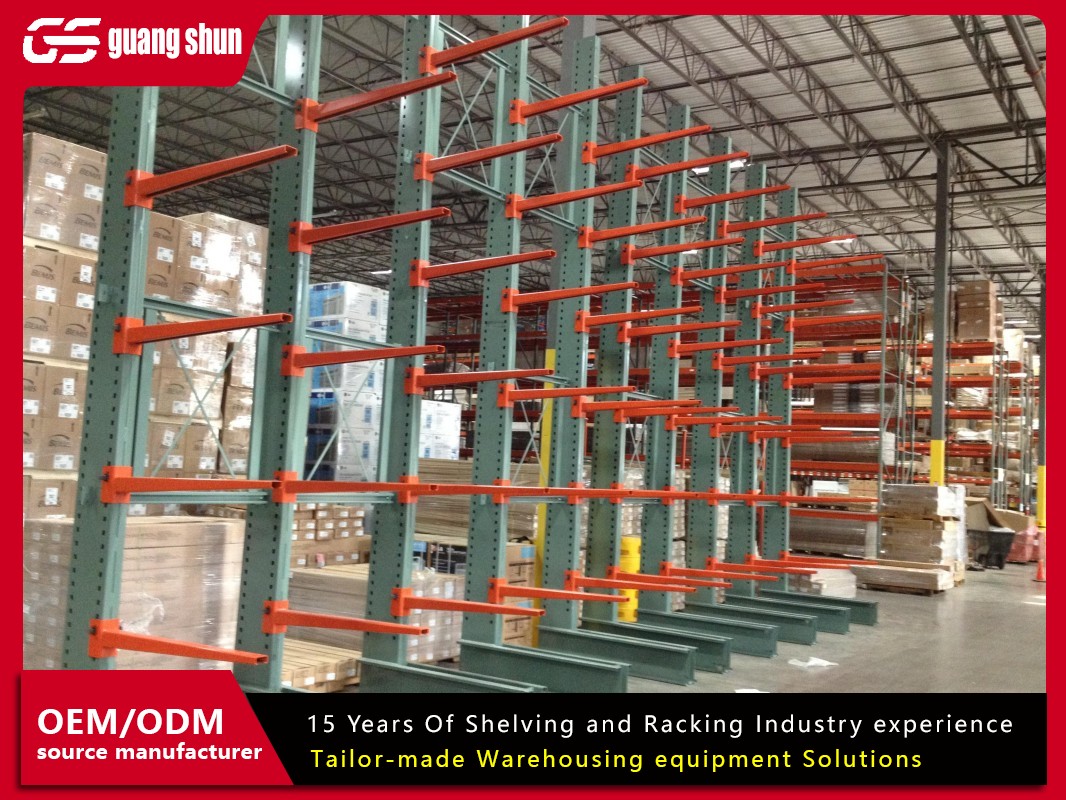In the world of warehousing, logistics, and industrial storage, efficiency is everything. The backbone of this efficiency, for countless facilities worldwide, is a seemingly simple yet profoundly critical system: pallet rack shelving. More than just metal beams and frames, a pallet rack shelving system is a strategic investment that directly impacts your operation's safety, productivity, and scalability. Whether you're setting up a new warehouse, optimizing an existing one, or simply looking to understand your options, a deep dive into this essential equipment is crucial. Choosing the right system isn't a one-size-fits-all decision; it requires a careful analysis of your needs, inventory, and space.
This comprehensive guide will walk you through the seven essential aspects of pallet rack shelving, empowering you to make an informed decision that will serve your business for years to come.
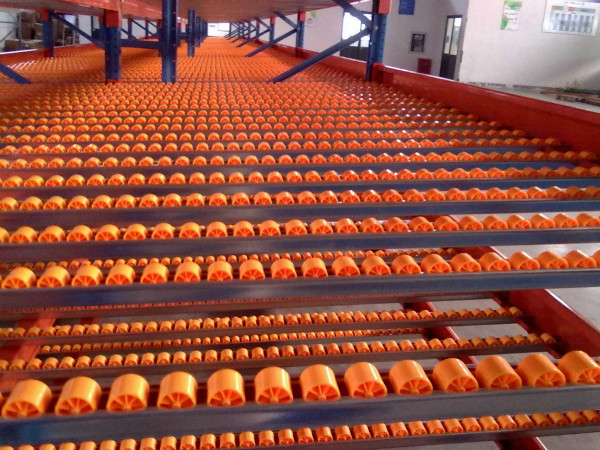
1. Understanding the Core Types of Pallet Rack Shelving Systems
Not all storage needs are created equal, and thankfully, neither are pallet rack shelving systems. The first and most critical step is understanding the different types available and identifying which one aligns with your operational workflow and inventory profile.
Selective Pallet Racks: This is the most common and versatile type of pallet rack shelving. In a selective system, each pallet is individually accessible without needing to move others. This provides 100% selectivity, making it ideal for facilities with a high SKU count where quick access to any specific pallet is necessary. Its straightforward design consists of upright frames and horizontal load beams, and it's easily adaptable and reconfigurable.
Drive-In/Drive-Through Racks: Designed for high-density storage, these systems sacrifice selectivity for space utilization. In a drive-in configuration, forklifts drive directly into the rack structure to place and retrieve pallets from the same aisle. This is perfect for storing large quantities of the same product with low selectivity, such as in cold storage where space is at a premium. Drive-through racks allow access from both ends, facilitating a First-In, First-Out (FIFO) inventory method.
Push-Back Racks: Another high-density option, push-back pallet rack shelving operates on a slightly inclined cart system. Pallets are loaded from the front, pushing the previous load back. When retrieving a pallet, the next one automatically moves forward. This system offers better selectivity than drive-in racks and is excellent for Last-In, First-Out (LIFO) inventory or for multiple SKUs that still require good density.
Pallet Flow Racks: Utilizing dynamic rollers and a gravity-fed system, pallet flow racks are the pinnacle of high-density, high-throughput FIFO storage. Pallets are loaded at the higher end of a slight decline and glide smoothly to the picking face on the other end. This is exceptionally efficient for perishable goods or items with strict expiration dates, ensuring perfect stock rotation.
Cantilever Racks: For storing long, bulky, or awkward items like lumber, pipes, or furniture, cantilever pallet rack shelving is the ideal solution. It features a central column with arms that extend outward, providing clear, unobstructed access to the stored materials without the interference of front-facing uprights.
2. Key Components and Structural Anatomy of a Pallet Rack
To properly specify, maintain, and safely use a pallet rack shelving system, you must understand its fundamental components. Each part plays a vital role in the overall integrity and capacity of the structure.
Upright Frames: These are the vertical components that form the backbone of the system. They are typically constructed from rolled steel and feature a series of holes or teardrop slots for beam connection. The height, depth, and gauge of the steel used in the upright frames are primary determinants of the system's overall load capacity.
Horizontal Beams: These components connect the upright frames and provide the direct support for the pallets. Beams lock into the uprights using mechanical safety locks. Their capacity is determined by their length, height, and the thickness of the steel. It is critical never to mix beams and uprights from different manufacturers or systems without engineering approval.
Wire Mesh Decking or Steel Supports: To hold the pallets, you need a surface. Wire mesh decking is a popular choice as it allows for fire sprinkler penetration, prevents dust accumulation, and is lightweight. Alternatively, structural steel channels or particle board can be used. The choice depends on the type of goods stored and fire safety regulations.
Frame and Row Spacers: These bracing components connect upright frames together back-to-back or in a row, increasing the stability of the entire pallet rack shelving structure and preventing sway.
Accessories: A robust pallet rack shelving system is often accessorized for enhanced safety and functionality. This includes:
Column Protectors: Steel guards that shield uprights from accidental forklift impacts.
Pallet Supports: Bars that provide additional support for pallets that are damaged or unstable.
Row Spacers: Used to maintain consistent spacing between back-to-back racks.
Shims: Used to level the racks on an uneven floor.
3. How to Calculate the Correct Load Capacity for Your Needs
Perhaps the most critical technical aspect of pallet rack shelving is understanding and correctly calculating load capacity. Overloading a rack is one of the most common and dangerous mistakes, leading to catastrophic failure.
The capacity of a pallet rack shelving system is defined by two main factors:
Uniformly Distributed Load (UDL): This is the maximum allowable weight that can be evenly distributed across each level of the rack. For example, if a beam level has a UDL of 5,000 lbs, you can place two pallets weighing 2,500 lbs each on that level.
Point Load: This refers to the maximum weight that can be applied to a single point on the beam, which is crucial if a pallet's load is not evenly distributed.
To calculate your needs:
Weigh Your Heaviest Pallet: Determine the maximum weight a single loaded pallet will have.
Consider the Load Distribution: Is the weight evenly spread, or is it concentrated in one area? This affects the point load requirement.
Plan for the Future: Your heaviest product today might not be your heaviest tomorrow. Always incorporate a safety margin. It is standard practice to choose a pallet rack shelving system with a capacity that exceeds your current maximum load by at least 15-20%.
Consult a Professional Rack Designer or Engineer: They will perform a full capacity analysis, considering the beam lengths, upright frame specifications, and overall configuration to ensure the system is rated for your specific application. Never guess when it comes to capacity.
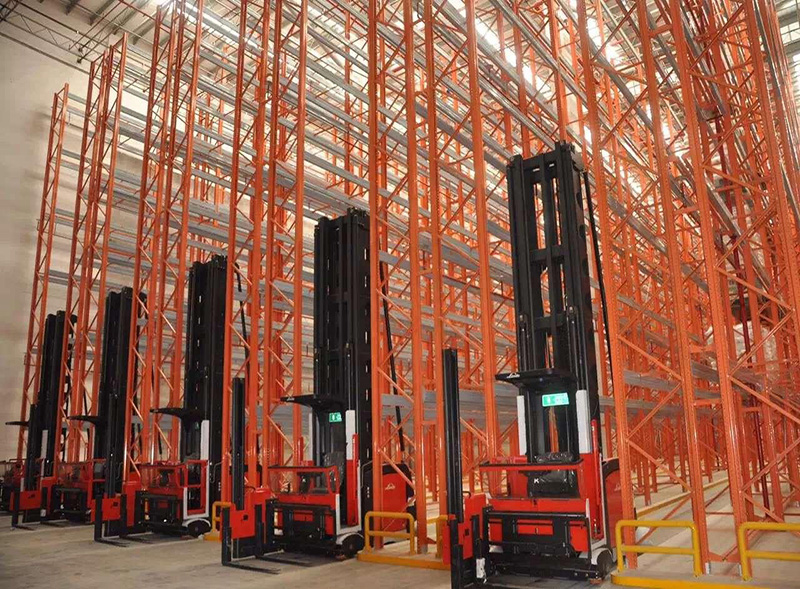
4. The Critical Role of Safety and Proper Maintenance Protocols
Safety in a warehouse environment is non-negotiable, and your pallet rack shelving system is at the heart of it. A failure can lead to severe injury, product loss, and significant downtime.
Professional Installation: Never attempt a DIY installation of an industrial pallet rack shelving system. Certified installers ensure that the structure is plumb, level, and anchored correctly according to the manufacturer's specifications and local building codes.
Regular Inspections: Implement a formal inspection program. This includes:
Daily Visual Checks: Operators should be trained to report any visible damage immediately.
Weekly/Monthly Formal Inspections: A designated safety officer should perform a more thorough check, documenting any issues.
Annual Professional Inspections: A third-party rack safety expert should conduct a comprehensive assessment of the entire system.
Damage Assessment and Protocol: The most common damage is forklift impact on upright frames. Establish a clear protocol: any upright with a dent deeper than ¾-inch or a bend more than ½-inch must be immediately unloaded and the section closed off until repairs are made by a qualified technician. Never attempt to straighten a damaged upright.
Employee Training: All personnel who work near or operate equipment around the pallet rack shelving must be trained on proper loading techniques, capacity limits, and how to identify potential hazards.
5. Optimizing Your Warehouse Layout with Pallet Rack Shelving
The placement and configuration of your pallet rack shelving are just as important as the system itself. An optimized layout maximizes your cube (the total available storage space) while maintaining efficient material flow.
Aisle Width: This is a primary trade-off between density and accessibility. Narrow aisles (e.g., 8 feet) require specialized narrow-aisle forklifts but dramatically increase storage density. Wider aisles (e.g., 12+ feet) are necessary for standard counterbalance forklifts and provide more maneuverability but reduce overall storage.
Vertical Space Utilization: Don't ignore the power of height. Modern pallet rack shelving can extend very high, often to 40 feet or more. Using the full clear height of your building is one of the most effective ways to increase capacity without expanding your footprint. This, of course, requires high-reach forklifts or order pickers.
Slotting Strategy: Place your fastest-moving (high-turnover) SKUs in the most accessible "golden zone"—between knee and shoulder height for pickers—to minimize travel and lifting time. Slower-moving items can be stored in higher or lower locations.
Future-Proofing: Design your pallet rack shelving layout with flexibility and growth in mind. A modular selective system is often easier to reconfigure as your inventory and business needs change than a permanent high-density system.
6. Navigating the Purchase: New vs. Used Pallet Rack Shelving
Budget is always a consideration, and the market for used pallet rack shelving is robust. Each option has its pros and cons.
New Pallet Racking:
Pros: Guaranteed quality and consistency, full compliance with current safety standards, custom engineering and configuration options, manufacturer's warranty, and immediate availability of matching components.
Cons: Higher upfront cost.
Used Pallet Racking:
Pros: Significant cost savings, immediate availability (if in stock), and environmental benefits through reuse.
Cons: Potential for hidden damage or wear, limited selection of sizes and configurations, potential difficulty in sourcing matching components later, and may not meet current engineering standards. A thorough inspection by a qualified person is absolutely mandatory.
7. Essential Accessories to Enhance Your Storage System
The basic pallet rack shelving structure can be transformed into a more specialized and safer system with the right accessories.
Frame Guards and Column Protectors: As mentioned, these are critical for protecting your investment from impact damage.
Rack-Mounted Lighting: Improves visibility and safety for pickers in high-bay storage areas.
Decking: Choosing the right decking (wire mesh, steel, wood) is essential for both safety and functionality.
Stairways and Mezzanines: By adding a mezzanine level onto your pallet rack shelving, you effectively create a second floor, doubling your usable floor space for offices, packaging areas, or additional small-parts storage.
In conclusion, pallet rack shelving is far more than simple storage; it is the strategic framework upon which an efficient and safe warehouse is built. By thoroughly understanding the types, components, capacity, safety, and layout principles, you can select and implement a system that not only meets your current needs but also scales with your business's future growth. A well-planned pallet rack shelving investment pays for itself many times over in the form of optimized operations, enhanced safety, and maximized profitability.



